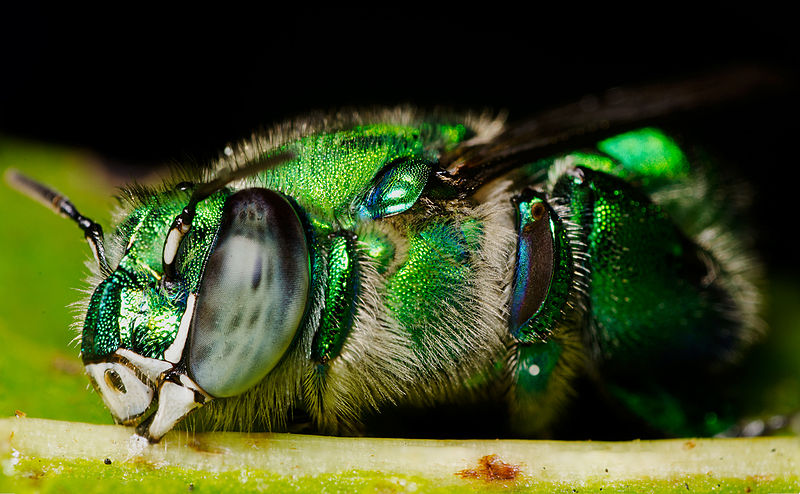
Green Orchid Bee Facts
- Most notably, the dazzling Green Orchid Bee distinguishes itself from related species in a manner that has nothing to do with its appearance. That’s because, as it evolved, this marvelous insect developed a case of mutualism with neotropical orchids.
- Furthermore, in its case, both the insect and the flower benefit from the relationship. The male bee benefits by gathering special fragrance ingredients from the flower. These he later uses in courtship rituals. Meanwhile, the flower benefits due to the pollination that occurs when the bee visits the flower.
- This marvelous invertebrate represents one member of a Family containing roughly 200 species. It also remains the only member of this group that appears outside of either Central America or South America. However, its range was accidentally extended artificially through the actions of humans.
- Finally, unlike many types of insects throughout the world, this particular species appears to still have a rather sizable population. Therefore, the IUCN does not currently place it on its Red List of Threatened Species. Nevertheless, it faces the same potential threats as other species, namely climate change and habitat loss.
Related Articles

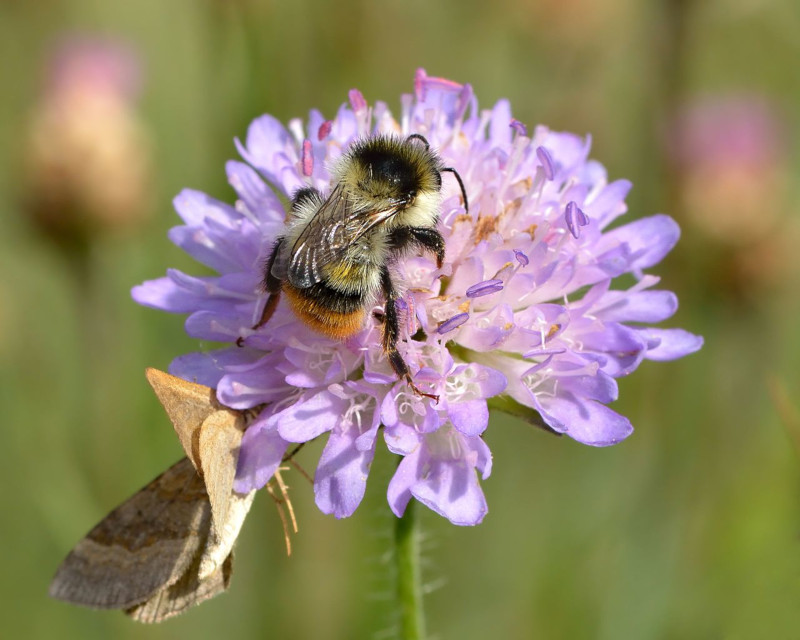
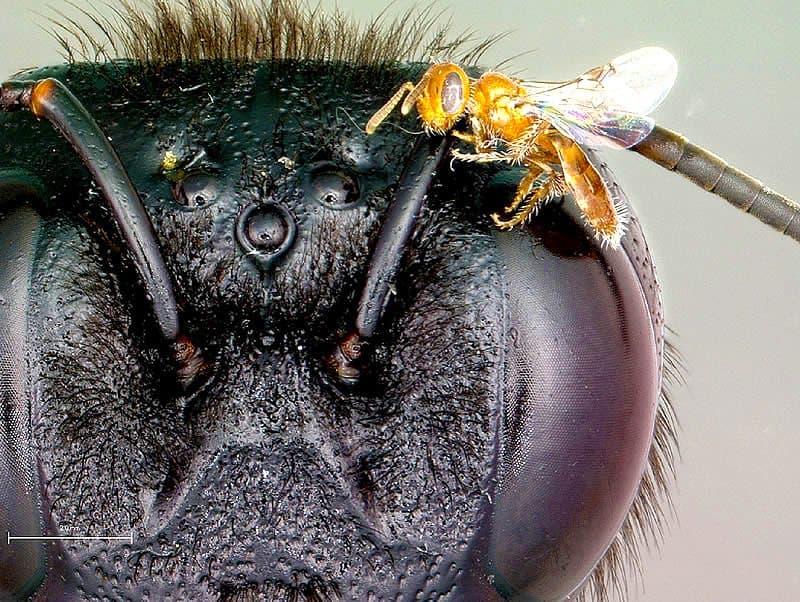
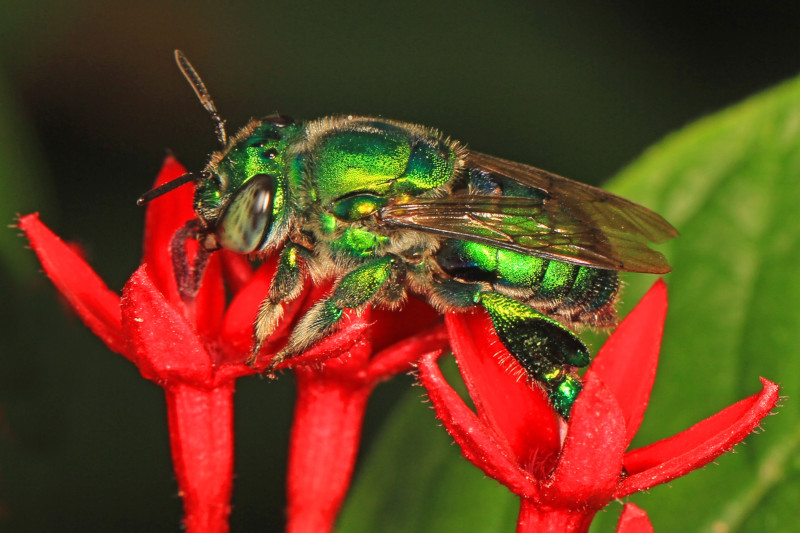
Green Orchid Bee Physical Description
First of all, regardless of its great beauty, the awesome Green Orchid Bee nevertheless remains a relatively small variety of bee. That’s because individuals of both genders attain an average total body length of roughly 0.5 in (1.3 cm).
Additionally, both genders appear quite similar in another manner. That holds true because both males and females possess darkly colored, yet translucent, wings display varying shades of shiny metallic green.
However, the wonderful Hymenoptera does display sexual dimorphism in several other ways. Firstly, the male has an enlarged joint on its hind leg that the female lacks. Secondly, the females has the ability to sting, multiple times, in fact. But the male lacks a stinger of any kind.
- Kingdom: Animalia
- Phylum: Arthropoda
- Class: Insecta
- Order: Hymenoptera
- Family: Apidae
- Genus: Euglossa
- Species: E. dilemma
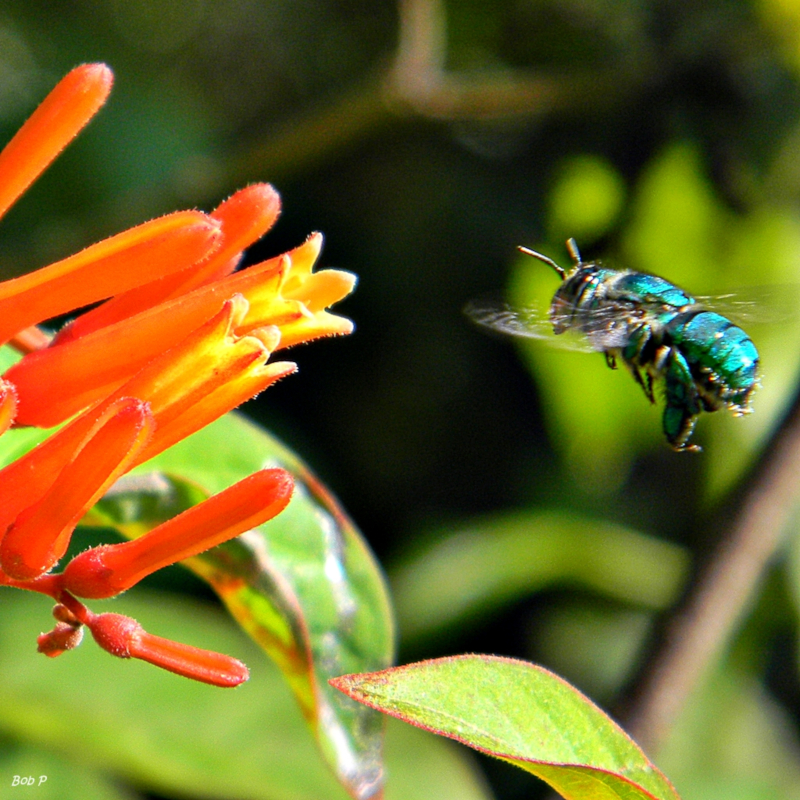
Green Orchid Bee Distribution, Habitat, and Ecology
Like many of the other known members of its Family, the gorgeous Green Orchid Bee evolved as native to Central America. That natural range extends from Mexico to Costa Rica. But, likely via agricultural transport, it has now established a foothold in Florida, in the United States.
Within its native range, it displays a more adaptable and versatile nature than other species in its Family. There, it inhabit several kinds of hot, dry habitats. These include pastures, gardens, parks, and degraded forests. In its adopted range, in the United States, it appears in similar habitats.
This amazing creature also displays specialized biology in both genders. The male only visits specific types of orchids, thus the common name. From these he gathers the specialized ingredients he uses in his courtship rituals.
However, the female displays much less discrimination in her choices, visiting numerous species of flowers in her search for pollen. In addition, the female constructs the nest on her own. Meanwhile, both males and females collect the nectar so vital to their survival.
Species Sharing Its Range
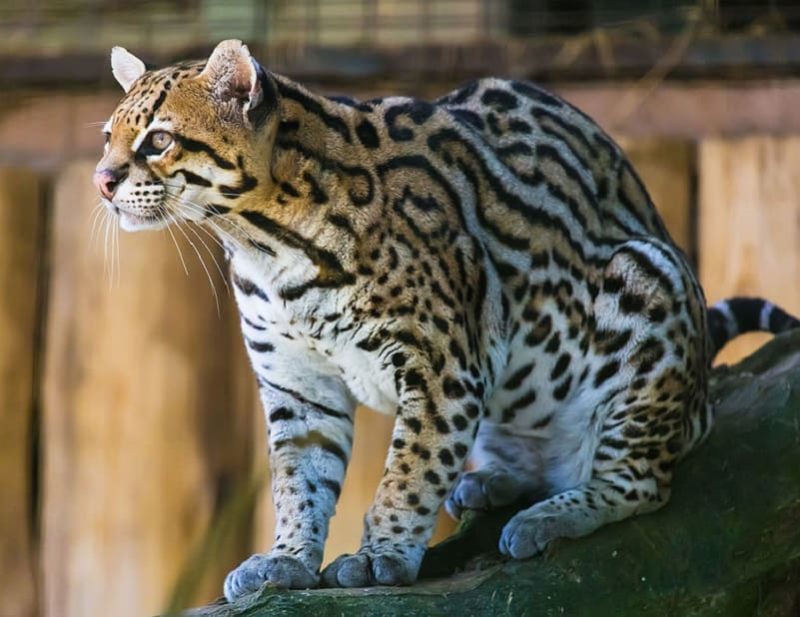


Check out our other articles on 9 Bewildering African Plants, Blue Shark, Gocta Cataracts, Mary River Turtle, Lord Howe Island Stick Insect, Wallace’s Flying Frog, Tawny Frogmouth, Rock Hyrax









I LIVE IN WELLINGTON, FLORIDA AND HAVE AN UNUSUAL RELATIONSHIP WITH A GREEN ORCHID BEE. OFTEN, WHEN I GO TO MY BIRD FEEDER IN EARLY MORNINGS THE BEE COMES TO CHECK ME OUT (MAYBE GREETS ME?) AND FLITS BACK AND FORTH RIGHT IN FRONT OF MY FACE (SOMETIMES WITHIN 5-7 INCHES). I CALL IT MY PET BEE. KIND OF FUNNY, HUH?
Hello Wilma,
That is indeed a fascinating experience! While it’s not completely unknown for insects to form attachments to humans, it has been known to happen on rare occasions. You are most fortunate.
OBP